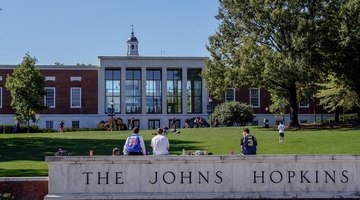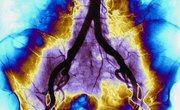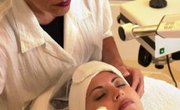When you have done the intensive and exhaustive work to become a physician, you are doing much more than entering a worthy profession. A doctor is answering a call to assist others at more than likely one of the most difficult times in their life. It is a profound and noble pursuit and takes years of rigorous research, training and studying on many levels to have the privilege to practice as a physician.
Depending on the specialized area of medicine the aspiring physician intends to practice, there are a few paths to get that degree. Colleges with good medical programs are rich in research, hands-on laboratory opportunities and offer access to any required residency or internship programs for enrolled students.
There are many top medical schools across the nation. Before you pick one of the top 20 colleges for doctors in the world, you should familiarize yourself with what it takes to be a good physician and what school will best serve you in getting to that goal.
Years of Schooling for a Doctor's Degree
Anyone hoping to pursue the path to becoming a practicing physician needs to first have a high school diploma or equivalent. Following graduation with a bachelor’s degree from a four-year college with pre-med, biology and other related courses, the student will move on to a medical school or health-profession program.
Medical students are required to complete a residency program, which can range from one year to seven years or more. Some specialized areas require a fellowship in conjunction with a residency or instead of a residency. The top med schools will assist a medical student with these requirements.
Each state has a license requirement for physicians. After graduating from medical school, physicians will more than likely continue their education in independent study as well as in a hospital setting. To get into medical school, students need to have taken the MCAT.
Hierarchy for Medical Students
A hospital has a hierarchy of physicians that a student should understand before slipping on their first set of scrubs. At the bottom of the totem pole are the fresh medical students who are completing rounds to gain real-life experience on the hospital floor. Interns are assisting and gaining ground in their quest to becoming a professional physician.
Next, you have the junior residents and senior residents. These are led by a chief resident. The residents and fellows are finalizing their work experience and studies. The hierarchy concludes with the house staff and hospitalists with the attending physicians at the top.
Residency and Attending Physicians
After completing an internship at a hospital and passing the third level exam, a medical student is ready to start a residency. This can range from as little as a year to up to seven years. A residency will be shorter for those who are seeking a radiology degree or a family practice physician compared to the lengthy residency a surgeon is required to complete before graduation.
Once graduate students have completed all the lower levels of their required training, they move on to become an attending physician in their chosen specialty. They work under senior-level physicians at a teaching facility or hospital. The attending physician assists medical students who are working toward a D.O. or M.D. as well.
Best School for Radiologists
A critical member of the healthcare team, a radiology technologist is required to be proficient in X-ray technology as well as magnetic resonance imaging (MRI) and computed technology (CT) generators. Upon graduation, they assist the physicians and fellow radiologists who read the images to diagnose injury or serious illness.
The first medical school in the country continues to be one of the top choices for future doctors. The Perelman School of Medicine at University of Pennsylvania is a premiere college for radiology. Students are able to work with the college’s affiliated Pennsylvania Hospital, Hospital of the University of Pennsylvania and Penn Presbyterian Medical Center.
Six modules are available for medical students to work in intimate groups. Each module focuses on leadership and working as a team. Students can gain practical experience through simulation labs. Students can also earn real-life experience at the more than 50 institutes and centers affiliated with the school.
School of Medicine at Johns Hopkins University
The School of Medicine at Johns Hopkins University is consistently rated as one of the best colleges for doctors of different specialties. This is a very competitive school for applicants, with roughly 120 students accepted to this esteemed medical institution. As one of the top med schools in the country, it has a faculty to student ratio of 4.7 to 1. Johns Hopkins uses the Genes to Society Curriculum that pairs the student’s studies with clinical experiences on a quarterly basis.
There are four colleges at John’s Hopkins medical school: Nathans, Taussig, Thomas and Sabin. They encourage students to work together to form a strong community among the hardworking students.
Duke University School of Medicine
This school of medicine prides itself on creating critical thinkers who focus on hands-on experience. Students study basic science for one year compared to other medical school’s two-year requirement. They are put in positions to care for patients a year before their counterparts at other major medical institutions. A full year is spent on independent scholarship rather than a summer or semester.
The Duke University Medical Center is one of the country’s largest clinical and biomedical research institutions. It has a health system that covers 32 counties. The sprawling 210-acre campus has 88 buildings and employs more than 16,000 people with roughly 10 percent of them top faculty physicians and researchers. It has a faculty to student ratio of 3 to 1.
College of Medicine at Mayo Clinic School of Medicine
Rich in research programs, this school and faculty are continually updating to find and use the latest in medical technological advances. The College of Medicine at Mayo Clinic School of Medicine has an abundance of opportunities for students to gain real-life experience.
Students can complete rotations at this teaching arm of the Mayo Clinic. The Mayo Clinic has campuses in both Jacksonville, Florida and Phoenix. Research opportunities and hands-on experiences can also be conducted at affiliated Mayo Clinic Health System facilities by enrolled medical students.
During the sophomore year, medical students can choose selectives. These streamlined classes allow a student to delve further into their chosen field. Third-year students are required to write a scientific paper that is based on research they have conducted during their time at the college.
Best Medical Schools for Pediatric Physicians
Recognized as one of the more competitive pediatric medical programs with a rigorous course of study, the University of Cincinnati immerses its students in pediatric care.
From clinical work to the latest in child development research, students are given ample opportunity to explore their area of interest under the counsel of a stellar staff. The University of Cincinnati is consistently rated as one of the best medical schools in the country every year.
Harvard University’s pediatric medical program allows students who are resident doctors to serve in the department of medicate at Mass General Hospital for Children. The four-year program rotates resident physicians every six months between internal and pediatric medicine.
Related Articles
References
Writer Bio
Kimberley McGee is an award-winning journalist with 20+ years of experience writing about education, jobs, business trends and more for The New York Times, Las Vegas Review-Journal, Today’s Parent and other publications. She graduated with a B.A. in Journalism from UNLV. Her full bio and clips can be seen at www.vegaswriter.com.











